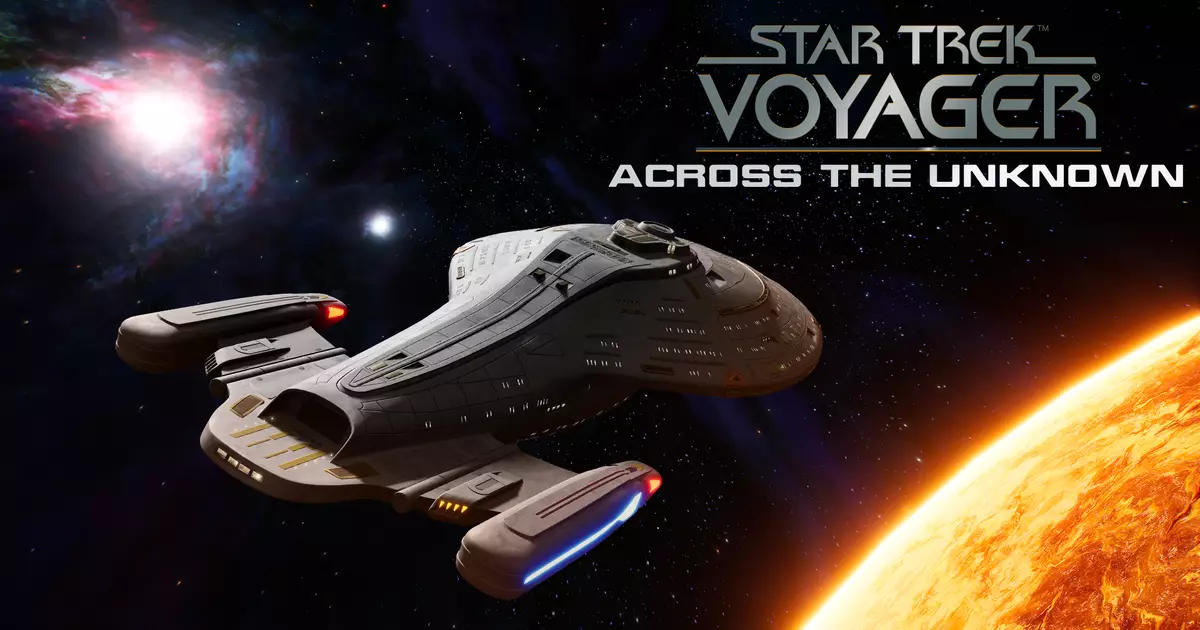The gaming industry often struggles to balance reverence for beloved franchises with innovative gameplay mechanics. Star Trek: Voyager – Across the Unknown endeavors to strike this delicate balance, promising fans an engaging mix of narrative choice, resource management, and exploration set aboard the iconic USS Voyager. Yet, beneath its surface lies both potential and pitfalls—a testament to its ambition but also a reminder of the risks involved when blending nostalgia with modern gameplay trends.
What immediately sets this game apart from typical space simulators is its commitment to storytelling, reflecting the core values of the original series: moral dilemmas, crew dynamics, and the unpredictable nature of the Delta Quadrant. This combination is not merely an exercise in fan service but a deliberate attempt to craft a fresh experience rooted in the universe’s rich tapestry. Yet, the question remains whether developers can elevate this concept beyond a superficial retread, delivering a compelling strategy game that respects the source material while offering players meaningful choices.
Challenging Conventions: Strategy, Morality, and the Unknown
Voyager’s game design introduces a layered complexity that appeals to players seeking depth. The inclusion of rogue-like elements signifies a departure from traditional static narratives, transforming each playthrough into a unique voyage fraught with unpredictable danger. Because every decision—whether diplomatic or aggressive—carries weight, players are compelled to think carefully about how they navigate this unfamiliar universe.
Furthermore, the ship and crew management aspect effectively immerses players into the day-to-day operations aboard Voyager, from upgrading facilities to balancing resources. This aligns the gameplay with popular tactical series like XCOM, emphasizing strategic planning and adaptive problem-solving. But it’s not just about crunching numbers; the moral choices—such as conducting controversial research or choosing between diplomacy and combat—add an ethical dimension that echoes the series’ philosophical underpinnings. The game seems poised to marry the cerebral with the visceral, offering a nuanced take on what it means to lead a starship through uncharted territory.
Resurrecting Iconic Characters and Building a New Narrative
A noteworthy aspect is the potential for narrative dynamism—bringing familiar faces into a new context. Players will interact with characters like Chakotay, Seven of Nine, Harry Kim, and even the Doctor, whose roles are reimagined within this strategic framework. The prospect of possibly creating “what-if” scenarios—like Janeway transforming into the Borg Queen or the Doctor rising to captaincy—can invigorate the franchise with fresh storytelling possibilities.
However, such flexibility raises concerns about the coherence of the universe’s lore. Does allowing for radical deviations risk undermining the narrative integrity of Voyager’s original story? While it’s tempting to imagine scenarios infused with fan-fiction flair, balancing creative freedom with fidelity to the source material is vital. Overindulgence might dilute the series’ core themes, but judicious storytelling could elevate the game into a compelling reimagining of Voyager’s legacy.
Gameplay Mechanics: A Double-Edged Sword
The inclusion of base-building, spaceship combat, and away missions suggests a multifaceted gameplay loop. Players will configure their ship’s internal systems, deploy away teams, and engage in strategic combat, creating a layered experience that leverages familiar tropes of space simulators. These mechanics could foster a sense of agency and mastery, encouraging tactical experimentation.
On the downside, certain design choices—like the top-down movement within solar systems—risk making the universe appear less immersive, reducing the grandeur of the Delta Quadrant to a simplified, almost mundane backdrop. Such visuals might hinder the sense of wonder that is central to Star Trek’s storytelling ethos. If the game struggles to evoke the awe of space exploration, it could inadvertently diminish the franchise’s spirit, transforming what should be an epic odyssey into a modest tactical exercise.
Balancing Nostalgia with Innovation: The Critical Challenge
Ultimately, Star Trek: Voyager – Across the Unknown is caught at the crossroads of nostalgia and innovation. Its success hinges on whether it can transcend fan service to deliver a genuinely engaging strategy experience. The reliance on familiar characters, the homage to classic series themes, and the promise of meaningful choices all set high expectations. Yet, these elements must be executed with finesse; otherwise, they risk feeling superficial or disconnected from the strategic gameplay.
As a fan, I approach this project with cautious optimism. There’s undeniable allure in revisiting Voyager’s universe through a fresh lens, especially with gameplay mechanics that encourage tactical thinking and creative storytelling. Still, the challenge remains: can it develop a compelling, stand-alone experience that respects its origins while pushing the boundaries of genre? Only time will tell, but one thing is certain—this game symbolizes a bold step towards reimagining Star Trek for a new generation of gamers, blending nostalgia with a desire for innovation.

